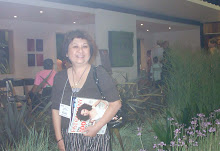Clean, ever flowing delicious, cool drinking water, Rome, Italy
 |
Fontana de Trevi (panoramio.com)
 |
Fontana dell'Acqua Paola -Gianicolo (Via Garibaldi) -(aboutroma.com)
|
|
 |
Fontana delle Tartarughe (aboutroma.com)
|
 |
| Fontana di Piazza San Pietro (aboutroma.com) |
You need to stay more days in Rome to be able to enjoy St. Peters Basilica, the different museums and Sistine Chapel alone which we didn't have. We combined touring St. Peters Basilica and the different museums and Sistine Chapel in a day and was really exhausted with art, architecture and sculpture information overload. I was so impressed by the famous colonnade of Giovanni Lorenzo Bernini, an architect, a sculptor, a painter and even a poet. The colonnade proves the truth of his axiom "An architect proves his skill by turning the defects of a site into advantages".
Very talented architects can do that like Frank Lloyd Wright with his "Fallingwater" home, a house build on rocks above a stream in Pennsylvania.
 |
| Fallingwater by Frank Lloyd Wright, Pennyslvania, USA (wright-house.com) |
The curving colonnade, which gives a nurturing feeling, is composed of 300 Doric columns, the oldest and simplest columns, and there are four rows on each side. Columns were made of travertine. Bernini used the concept of the "motherly arms of the church" for the colonnade which is so fitting for a place where the Pope bless and speak to all the faithful who traveled to see the Pope and St. Peters Basilica from far away lands. The Piazza of St. Peters was built from1656 to 1667 and the style is Baroque Neoclassical . You can see the elliptical plan with the Eygptian obelisk in the center that served as a turning point in chariot races during the ancient Circus of Nero.
 |
Aireal view of St. Peter's Square with the curving colonnade and Egyptian obelisk in the center by Wikepedia
 |
| Close-up of the Doric Column by Bernini |
|
Sister Pia, our jovial host, was kind enough to point to me the focal point wherein you only see one row of column instead of all the four rows of the colonnade.
 |
| Centro del Colonnato (Center of the Colonnade) |
 |
| Colonnade from the Centro Del Colonnato and you can only see one row- the front columns |
 |
| Colonnade taken outside the Centro Del Colonnato and now you can see four rows of columns |
Bernini's approach for the Piazza of St. Peter is to have a place for the biggest audience in order for the Pope to bless the faithful either in the Papal Canopy or a balcony and big TV screens located in strategic places and a special section designated for visiting and local bishops and priests.
|
















No comments:
Post a Comment